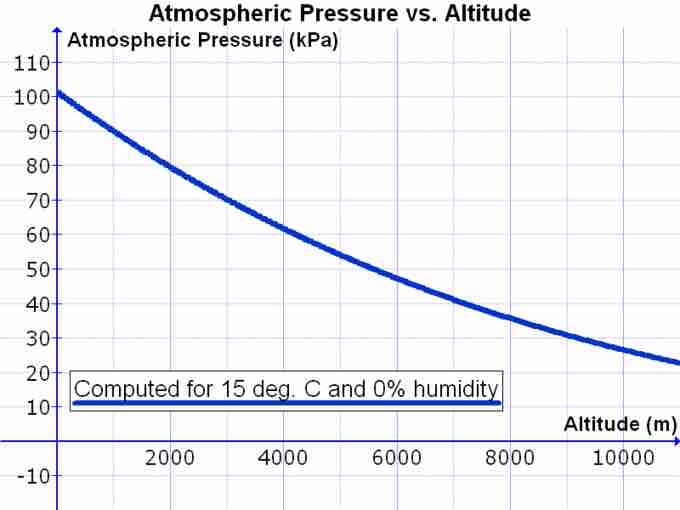Gas Pressure and Respiration
The respiratory process can be better understood by examining the properties of gases. Gases move freely with their movement resulting in the constant hitting of particles against vessel walls. This collision between gas particles and vessel walls produces gas pressure.
Air is a mixture of gases: primarily nitrogen (N2; 78.6 percent), oxygen (O2; 20.9 percent), water vapor (H2O; 0.5 percent), and carbon dioxide (CO2; 0.04 percent). Each gas component of that mixture exerts a pressure. The pressure for an individual gas in the mixture is the partial pressure of that gas. Approximately 21 percent of atmospheric gas is oxygen. Carbon dioxide, however, is found in relatively small amounts (0.04 percent); therefore, the partial pressure for oxygen is much greater than that of carbon dioxide. The partial pressure of any gas can be calculated by: P = (Patm) (percent content in mixture).
Patm, the atmospheric pressure, is the sum of all of the partial pressures of the atmospheric gases added together: Patm = PN2 + PO2 + PH2O + PCO2= 760 mm Hg. The pressure of the atmosphere at sea level is 760 mm Hg. Therefore, the partial pressure of oxygen is: PO2 = (760 mm Hg) (0.21) = 160 mm Hg, while for carbon dioxide: PCO2 = (760 mm Hg) (0.0004) = 0.3 mm Hg. At high altitudes, Patm decreases, but concentration does not change; the partial pressure decrease is due to the reduction in Patm .

Atmospheric pressure vs altitude
At high altitudes, there is a decrease in Patm, causing the partial pressures to decrease as well.
When the air mixture reaches the lung, it has been warmed and humidified within the nasal cavity upon inhalation. The pressure of the water vapor in the lung does not change the pressure of the air, but it must be included in the partial pressure equation. For this calculation, the water pressure (47 mm Hg) is subtracted from the atmospheric pressure: 760 mm Hg 47 mm Hg = 713 mm Hg, and the partial pressure of oxygen is: (760 mm Hg 47 mm Hg) 0.21 = 150 mm Hg.
These pressures determine the gas exchange, or the flow of gas, in the system. Oxygen and carbon dioxide will flow according to their pressure gradient from high to low. Therefore, understanding the partial pressure of each gas will aid in understanding how gases move in the respiratory system.